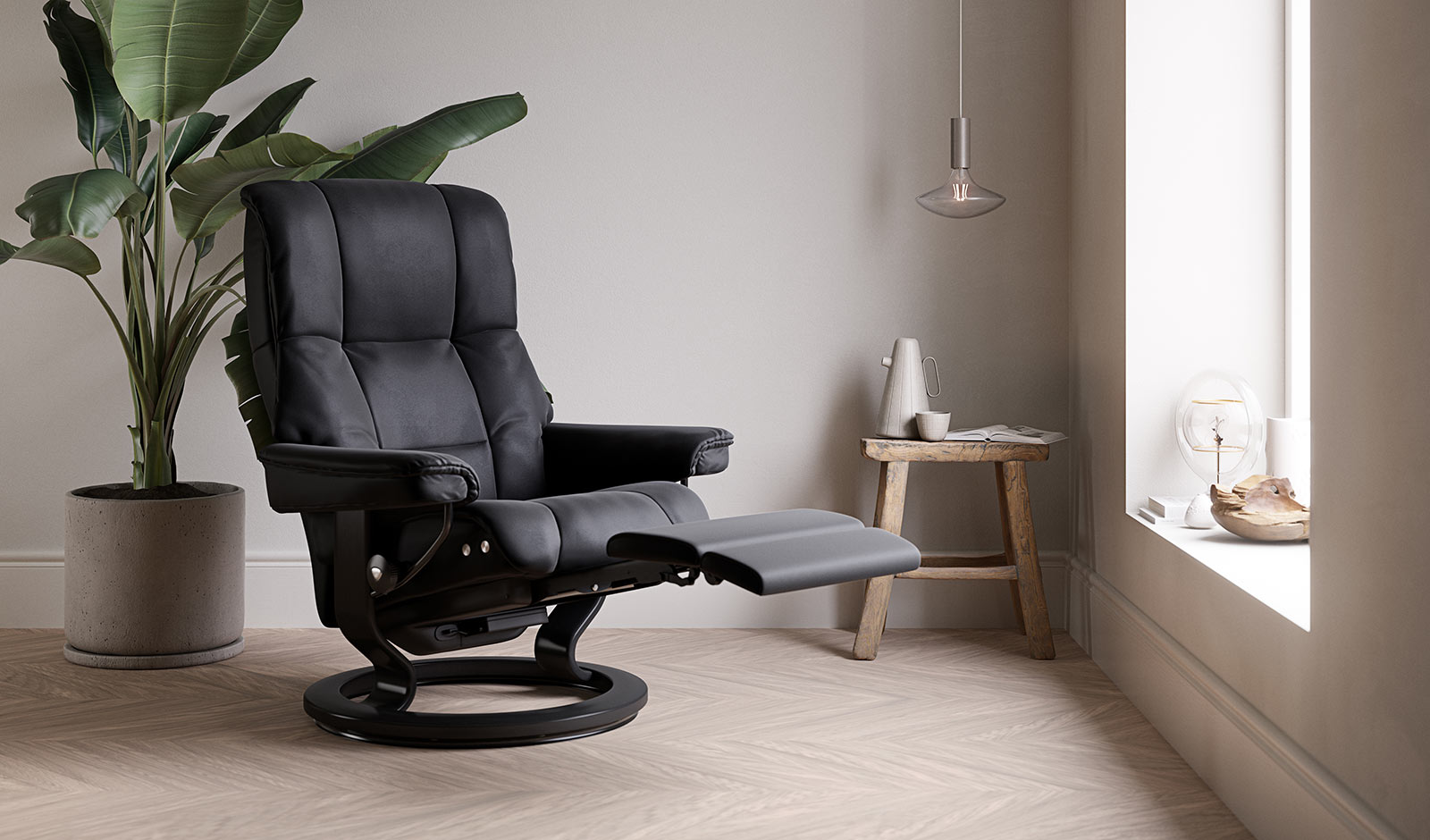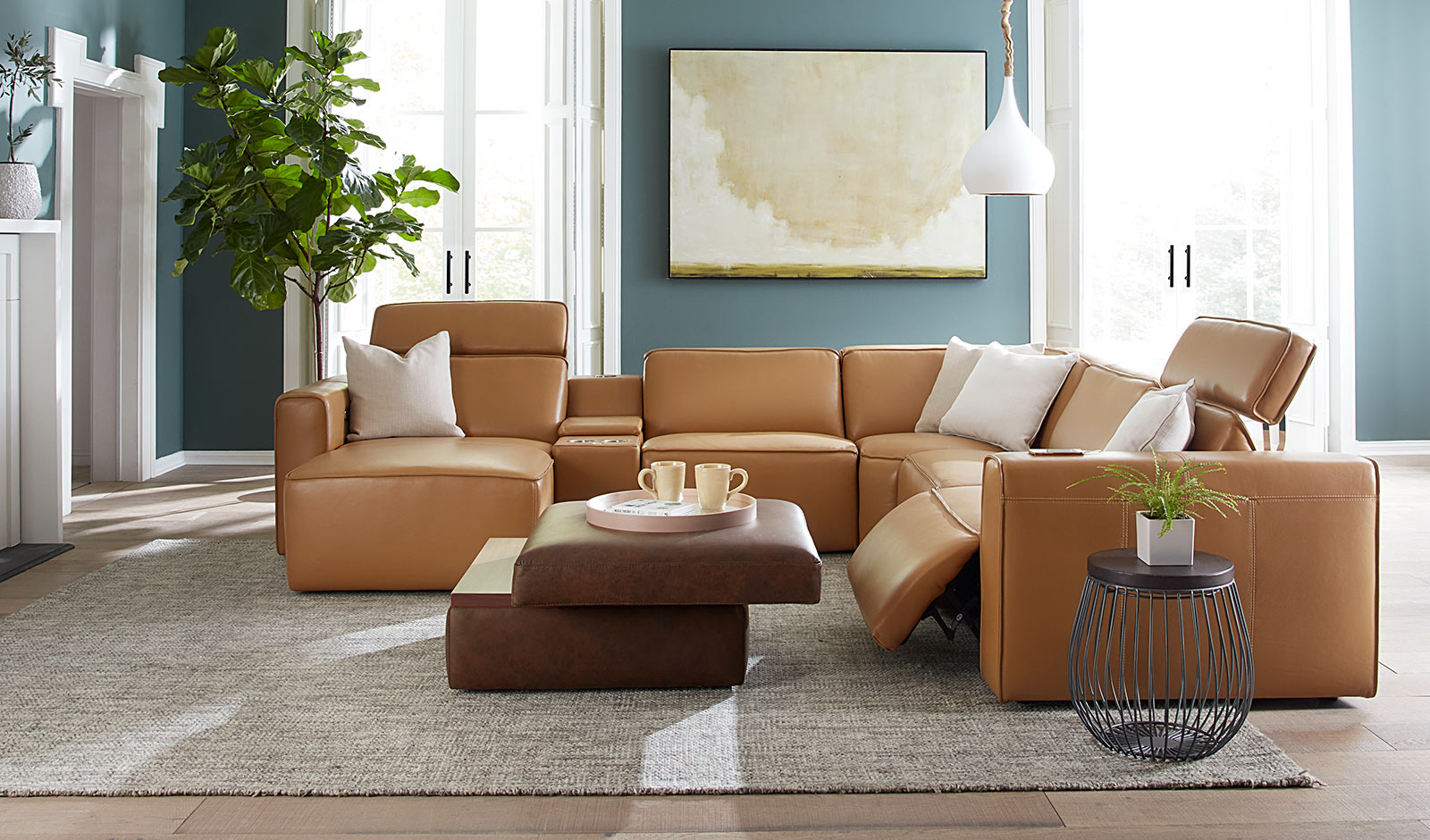We’re back with another installment in our furniture care series – today’s post is all about leather! Leather is a favorite upholstery option for customers at our New Haven furniture store: it’s beautiful, luxurious and remarkably durable. But like most things in life, it does need a little maintenance to keep it looking its best. Read on to learn our top tips for how to clean leather furniture.
Understanding Leather
The first step to caring for your leather furniture is to understand the nature of the material. The leather we use is a high-quality by-product of the meat industry, and all of our leather furniture is upholstered with full grain leather – including the backs and sides. Upholstery leather falls into three categories: aniline, semi-aniline and pigmented – each with its own characteristics.
Aniline leather uses soluble dyes to achieve a desired color while still showing the natural texture of the hide. Since natural markings are visible, only the highest quality leathers are appropriate for aniline finishing, which makes this type of leather more expensive. Aniline leather is not coated, so it can stain and scratch easily – it may not the best choice for homes with kids or pets. On the other hand, that lack of coating makes aniline leather extremely soft and luxurious, and it will develop a beautiful patina over time.
Semi-aniline leather is dyed with slightly pigmented dyes, which provide a light layer of protection. It will have a more uniform color than aniline leather, but pores and natural markings will still be visible. While semi-aniline leather is more durable than aniline, it still needs extra TLC to prevent stains and scratches.
Pigmented leather is sprayed with pigments, resulting in even coloration that covers most or all of the natural markings of the leather. This coating makes pigmented leather more hard-wearing, more stain-resistant, and lower maintenance – making it a great choice for homes with kids or pets. The amount of coating on pigmented leather can vary, so please ask us about the specific leather you’re considering if durability is a top concern.

Day-to-Day Leather Care
Here’s the good news – regular dry-cloth dusting and vacuuming in the crevices are all that you need to do to keep your leather furniture clean under normal conditions. We also recommend using a quality leather conditioner every six to twelve months.
Like any upholstery material, leather can fade when exposed to the sun. Consider placing your furniture out of direct sunlight or using curtains or blinds to screen it during sunny times of day.
Spills and Stains
For minor spills, wipe up any excess liquid right away with a clean, dry, absorbent cloth. Let the leather dry naturally – don’t try to hurry it along with a hair dryer.
For spots and stains, moisten a soft, white cloth with distilled water and apply it to the soiled area. Wipe away any excess water, then blot with a clean, dry cloth and allow to air dry. Never use soap or soak the area with water – doing so can cause more damage than the stain itself.
Greasy stains like butter or oil require special handling. Do not use water or cleaning products! Simply blot excess grease from the leather surface with a clean, dry cloth. The spot should dissipate into the leather after a short period of time.
Be cautious about cleaning products – saddle soap, cleaning solvents, furniture polish, oils, varnish, abrasive cleaners, detergent soaps, and ammonia can all damage leather. Always try any cleaning method in a hidden area first to test the results. Remember, the manufacturer is not responsible for damage incurred while cleaning.
For persistent stains, we recommend having a professional leather specialist clean the leather to avoid any potential damage.

Minor Scratches
For minor scratches on the surface of leather furniture, use a chamois, soft leather cloth or even your (clean!) fingers to gently buff the scratch. If needed, moisten lightly with distilled water to work scratches out.
Leather furniture is an investment, but with simple care and cleaning, it will last for decades. Perhaps it’s time to welcomes some leather into your home? Thanks for reading!
